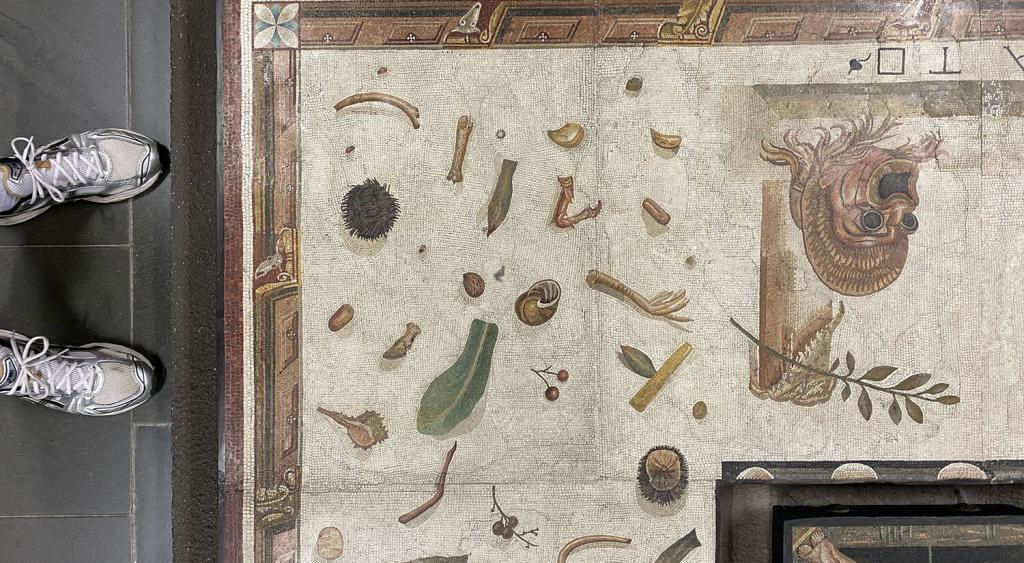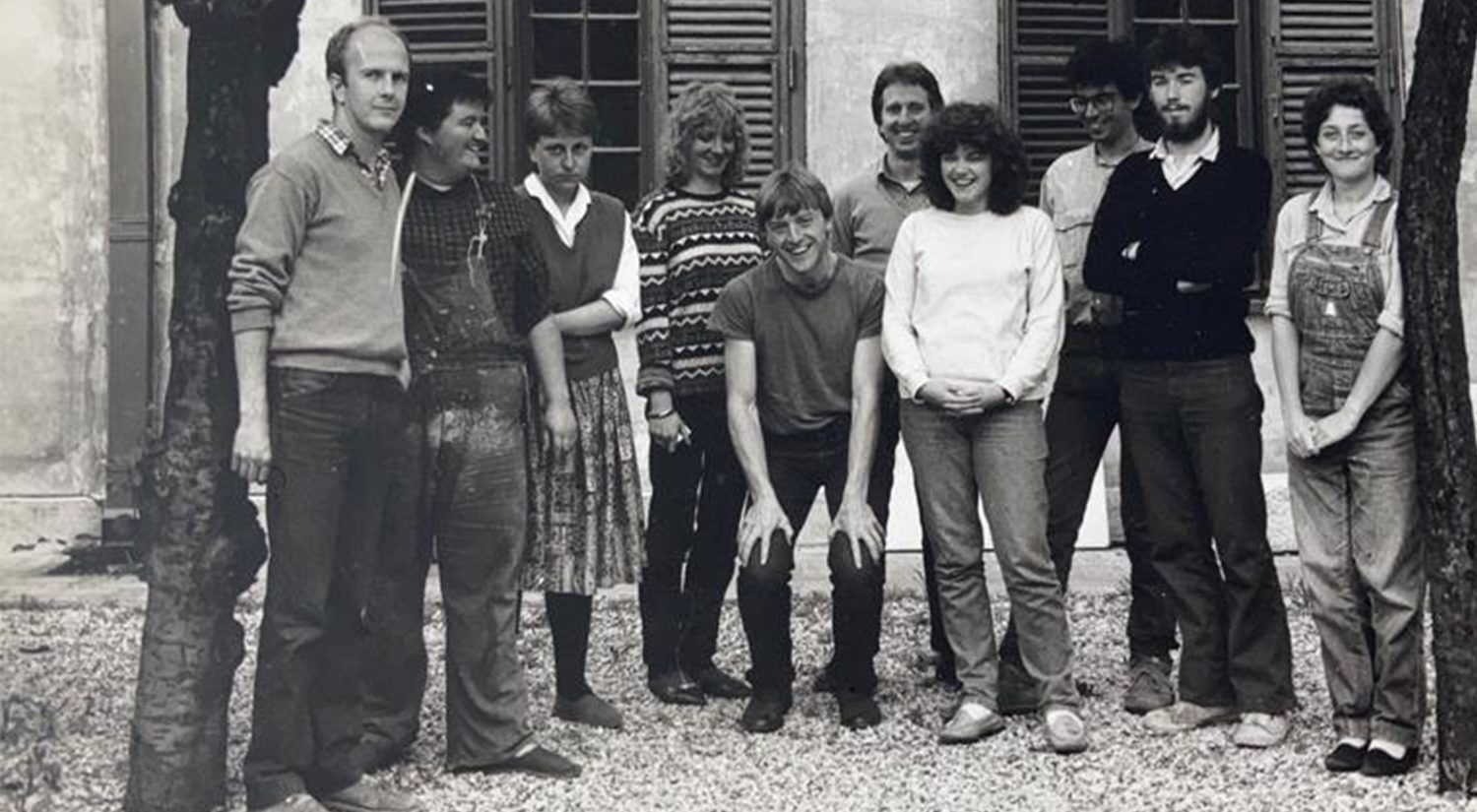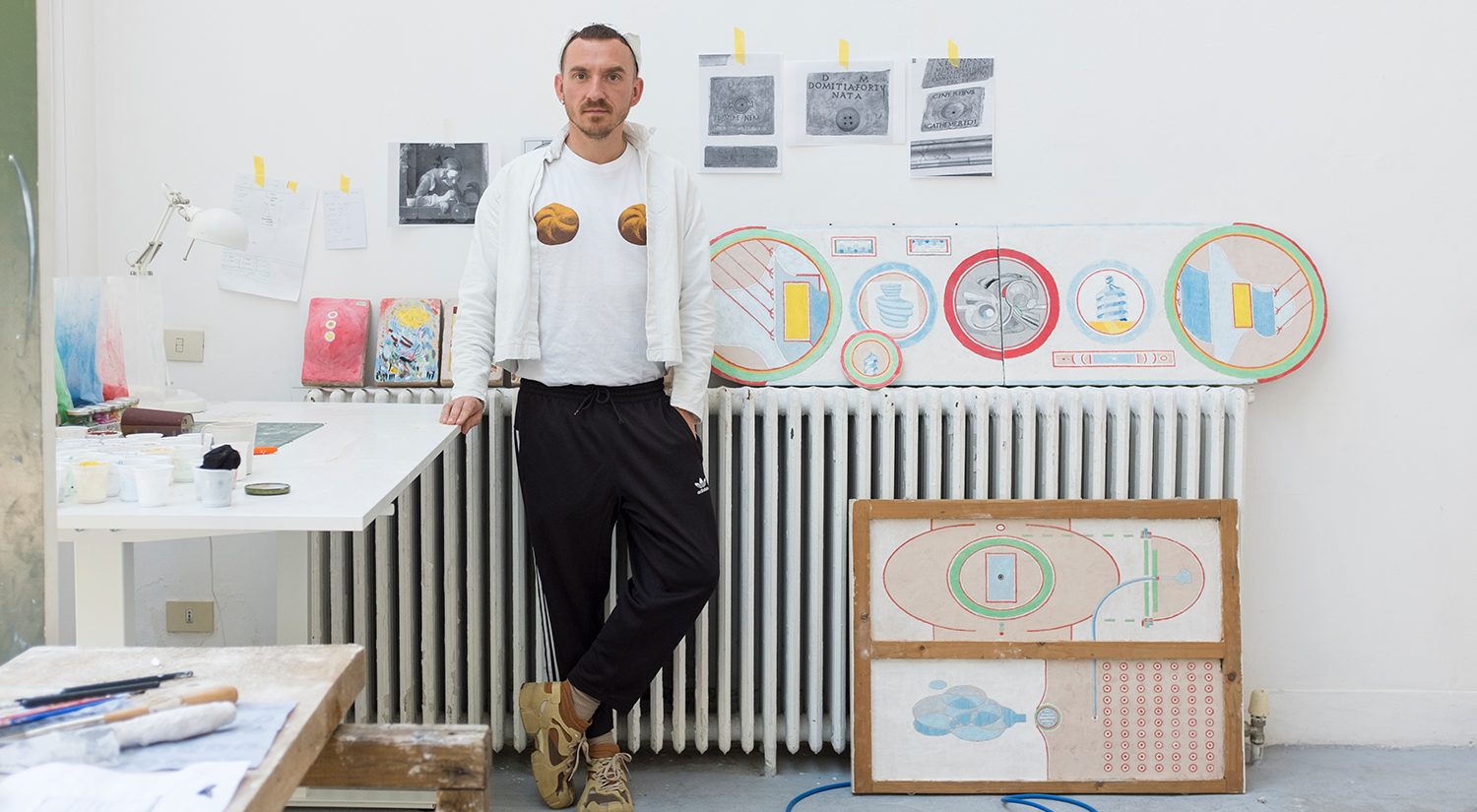An interview with Ruaidhri Ryan, Augusta Scholar, in which he speaks about the work he has produced during his residency at the BSR from September–December 2021.
1. You have always worked with the medium of film and video whereas more recently you have begun developing the technique of mosaics. Could you tell us more about it?
In-between fundraising for an experimental documentary film about storyboard artists, I was producing mosaics. Working with this formal duality impressed upon both pursuits but COVID’s explosion on the scene encouraged me to focus on mosaic, as something I could take control of, something I could work on alone during lockdown. I had seen photographs of mosaic fragments at Terme di Caracalla and was surprised by how they seemed like comic strips or tiles from storyboard sequences. Time is a material, which is built-in to moving images, I’m transferring my appreciation for light and narrative into the 2D plane of mosaics. There are many methods and approaches to the medium and I’ve been spending my time at BSR learning to work with natural stones; marbles and limestones and the Double Reverse/Ravenna method.


2. You undertook a research trip to the Veneto. What did you take from it?
The trip to Veneto offered the opportunity to visit marble suppliers, the world-renowned mosaic school in Spilimbergo and Orsoni, a beautiful and well-established glass furnace in Venice that produces glass smalti (mosaic tiles). They’ve been in operation since 1888 and offer over 3,500 tones of coloured glass! Safe to say, its a seductive place. I also took the opportunity to visit architectural sites designed by Italian architect Carlo Scarpa. He employed details from the most skilled Italian craftspeople and often incorporated gold and brass icons, symbols and signs alongside mosaic elements, various textures of concrete, colour and water. They fuse Japanese garden, brutalist architecture and set design from The Fifth Element and, – for me – his buildings feel like movies. In changes to daylight, details occur, reoccur, hide and reveal themselves – this is the kind of dialogue I hope my mosaics can have between each other and the audience.













